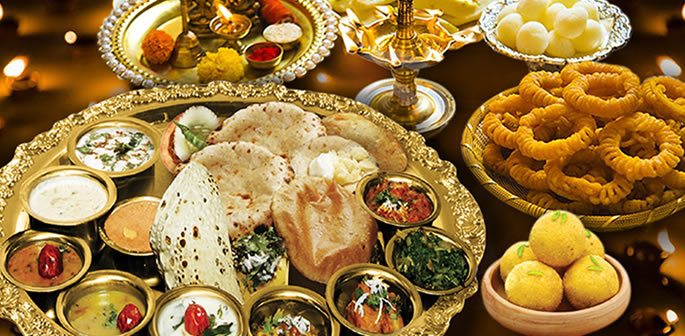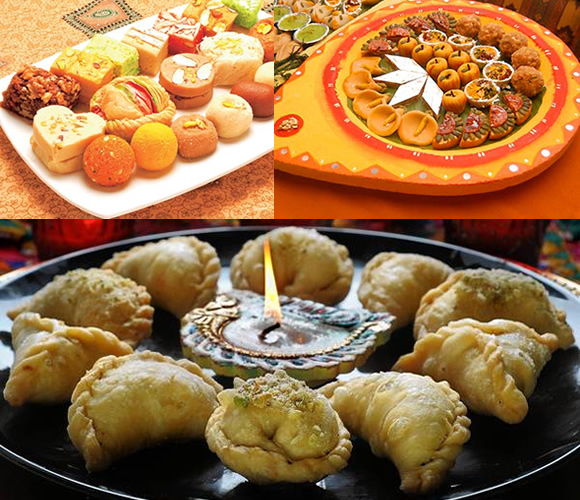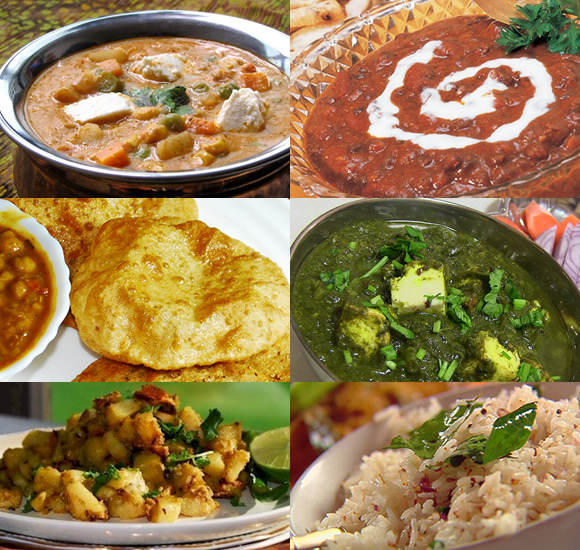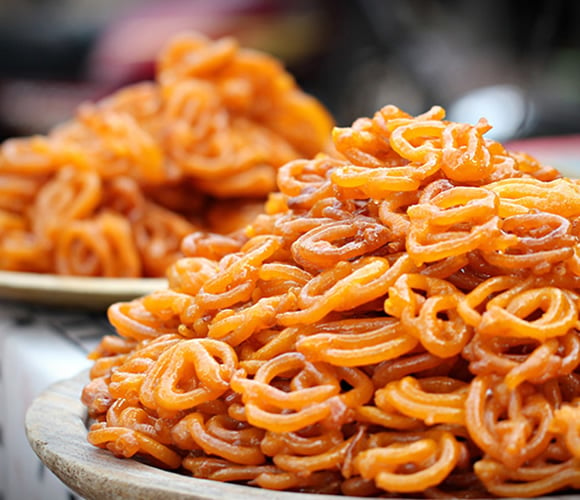Article about Food delight of diwali
Food Delights of Diwali
Diwali is the festival of lights marking the victory of good over evil and like any South Asian celebration, food plays a very important role for this special day, especially in the Hindu, Sikh and Jain calendar. We look at the kinds of food served.

Diwali without sweets and savories cannot be imagined!
Diwali celebrations cannot be authentic without the serving of specific types of food during this auspicious occasion.
Diwali is the festival of lights, fireworks and especially, ethnic sweets! On Diwali, there is a custom to exchange sweets with friends, family and neighbours.
It is a joyful time for people to gather and celebrate the triumph of good over evil. In the Hindu calendar it is the start of the New Year. And food plays a very important role in the celebrations. Therefore, Diwali without sweets and savories cannot be imagined!
Sweets are very centric to Diwali and one of the most common kinds of food served during the celebration.

The list of special Diwali sweets (Mithai) include freshly made Jalebis, Gulab Jamun, Shankarpale, Kheer, Gajar Ka Halwa, Kajoo Barfi, Suji Halwa, Besan Ke Ladoo and Karanji are amongst the most popular during this occasion.

The list of special Diwali sweets (Mithai) include freshly made Jalebis, Gulab Jamun, Shankarpale, Kheer, Gajar Ka Halwa, Kajoo Barfi, Suji Halwa, Besan Ke Ladoo and Karanji are amongst the most popular during this occasion.
Along with sweet dishes there are some savoury favourites too.
These include Dahi-Bhalle, Karanji, Samosas, Pakora, Mathiyaa, Ghathiya and Aloo Tikki which are very popular.
It is custom to make dishes at home for the celebration. Since many of the savoury dishes are fried, it means oil is needed, and the heating up of the oil is synonymous to the celebration of lighting and burning something for the event.
The Diwali food served and eaten depends on the culture and traditions followed by families.
There are also regional differences depending on which part of South Asia you originate from.
The women of households spend many days preparing food, which is usually in close family gatherings or groups, prior to the festival itself.
Most of the foods made include sweets and savoury snacks. Diwali day itself is usually a large feast.
Diwali cuisine is mainly a vegetarian affair. Some of the dishes cooked for the celebration include:
- Channa (chick peas)
- Saag (spinach)
- Daal Maharani (three different daals mixed)
- Navratan Korma (mix vegetables and paneer)
- Khasta Aloo (curried potatoes)
- Malai Wali Subzi Kofta (diced cabbage and spinach balls)
- Nariyal Aur Badam Wale Chawal (Basmati rice with coconut)
- Pooris (fried soft round breads)
- Raita (plain yoghurt with shredded raw onion and cucumber)

In the UK, in cities and towns with strong South Asian communities such as Southall, Wembley, Leicester, Manchester, Bradford, Leeds and Birmingham have many sweet shops which offer a huge variety of incredible sweets and savoury snacks. Diwali is a very busy period for these shops.
One sweet which is freshly made in front of you on the street is Jalebi. This sticky orange sweet is very moreish and is sometimes enjoyed with milk.

Jalebi is one of the sweets which is most exchanged during Diwali.
Diyas or Divas are very symbolic during the festival of lights.
A Diya is an oil lamp usually made from clay, with a cotton wick dipped in ghee or vegetable oils.

It is lit in households celebrating Diwali to shed light on darkness. We look at a very special treat for Diwali – edible Diyas!
Here is the recipe to make an edible Coconut Diya which contains a Khoya filling.
It is a delightful food that can be made with children in the kitchen for Diwali.
INGREDIENTS
Diyas
5 cups Dry Coconut Powder or fine flakes
1 tin Condensed Milk
1 tsp. Butter or Ghee
1/2 tsp. Cardamom powder
Almonds for wicks
Diyas
5 cups Dry Coconut Powder or fine flakes
1 tin Condensed Milk
1 tsp. Butter or Ghee
1/2 tsp. Cardamom powder
Almonds for wicks
Khoya Filling
3 cups Full Cream Milk
300 ml Thickened Cream
1 tin Condensed Milk
3 cups Full Cream Milk
300 ml Thickened Cream
1 tin Condensed Milk
METHOD
Khoya Filling
1. Put all the ingredients in a microwave proof container.
2. Mix it up
3. Heat it on high for 4 minutes.
4. Take the container out and stir it.
5. Heat it on high again for 4 minutes.
6. Stir it again.
Khoya Filling
1. Put all the ingredients in a microwave proof container.
2. Mix it up
3. Heat it on high for 4 minutes.
4. Take the container out and stir it.
5. Heat it on high again for 4 minutes.
6. Stir it again.
If you are not using the Microwave then just heat the mixture in a thick bottomed pan on the stove for 5-6 minutes (or more , until the consistency starts to thicken), making sure that the mixture does not stick to the bottom.
Alternatively you can make the Khoya (Mawa) traditionally or use Mawa powder available from all good South Asian stores.
Diyas
1. Empty condensed milk into large pan (ideally non-stick).
2. Add 4.5 cups coconut into the pan and mix well.
3. Cook mixture on low heat, stirring continuously. Do not allow the mixture to scald at the bottom.
4. Cook until mixture forms a soft lump and leaves side of pan.
5. Let the mixture cool for a short time until it can be shaped by hand.
6. Grease palms with the butter.
7. Roll portions of mixture into ping-pong sized balls.
8. Shape carefully into Diyas, with a circular depression and mouth for the wick.
9. Coat with leftover dry coconut powder to help handling.
10 Chill in the fridge to allow them to set into shape.
11. Fill each Diya with the Kohya filling
12. Add an Almond as the wick. And enjoy!
1. Empty condensed milk into large pan (ideally non-stick).
2. Add 4.5 cups coconut into the pan and mix well.
3. Cook mixture on low heat, stirring continuously. Do not allow the mixture to scald at the bottom.
4. Cook until mixture forms a soft lump and leaves side of pan.
5. Let the mixture cool for a short time until it can be shaped by hand.
6. Grease palms with the butter.
7. Roll portions of mixture into ping-pong sized balls.
8. Shape carefully into Diyas, with a circular depression and mouth for the wick.
9. Coat with leftover dry coconut powder to help handling.
10 Chill in the fridge to allow them to set into shape.
11. Fill each Diya with the Kohya filling
12. Add an Almond as the wick. And enjoy!
DESIblitz wishes you a very Happy Diwali and hope you have a food rich celebration!

Comments
Post a Comment